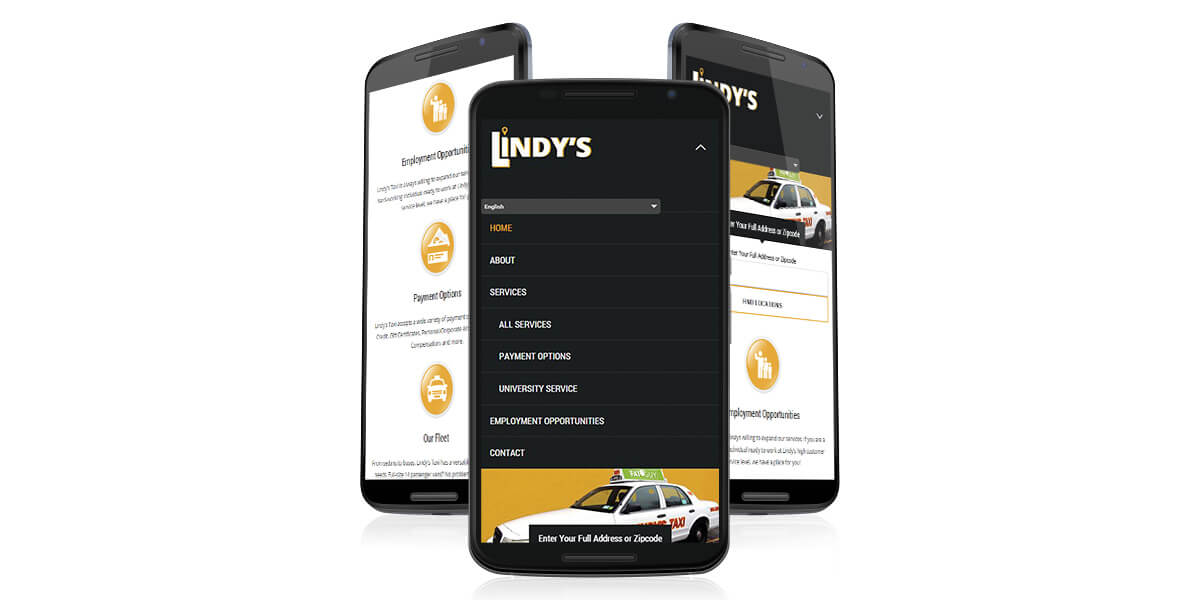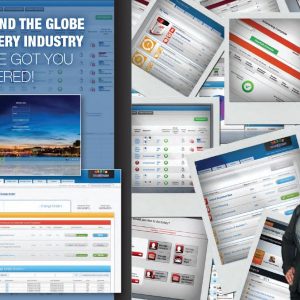So, it’s time for your company to build a new website. It’s been limping along online for the last ten years, beginning to look its age, and hardly serving your needs. Even worse — it’s most likely chasing away potential customers!
Whatever your new project, you’ll need to find an experienced and reliable vendor to help you plan, design and execute your ideas, and launch that new site for all the world to see! If you’ve been searching all over the ‘net to find that “perfect” vendor, you already know that there are easily tens of thousands of agencies to choose from. Or, perhaps you’ve assigned the task of hiring the best web design agency to your in-house procurement team, who will attempt to locate the most capable vendor to do the best job while providing the best value — with impeccable reliability (is there really such a proposition?).
No doubt, you’ve already visited a number of online “directories,” encountered endless “happy” customer testimonials, read through scores of informational blogs, and evaluated truly creative online portfolios to help determine your top choices.
So, how will you ultimately decide? For starters, we suggest that you select a minimum of five or ten agencies who, through your exhaustive research, appear to meet the needs of your organization and the project at hand. Next, you’ll want to communicate your project to each selected agency. Here’s an effective approach:
- Call every agency on your list. But before you do, write down your most important goals and all objectives of your project, and the reasons you’re looking to hire an agency in the first place. You’ll definitely want to engage agency staff directly by phone to learn which agencies demonstrate sincere interest, provide the most thoughtful answers to your questions, and present a helpful and consultative tone. Eliminate any vendor who fails to satisfy any of the above conditions.
- Pay careful attention to any interesting ideas and suggestions regarding design or functionality, that you might want to consider including in your project. Review all your call notes, and make final decisions regarding your goals and objectives for your new project.
- Next, create an RFP, also known as a “Request for Proposal.” You can do this yourself, or hire an outside consultant experienced with the process, to collaborate and create an effective RFP that addresses all elements pertinent to your new project. Next, email your RFP to each selected agency and, when proposals arrive, review every one with scrutiny.
Here’s why an RFP is important:
- A well-written RFP describes and outlines every single function to be delivered, every objective to be met. Unlike a phone call, no stone is left unturned because you can (and will) spend much more time planning and creating this important document.
- When a Web agency receives your RFP, they see it as an “invitation” to provide work, a questionnaire to be answered, and they will respond after giving a great deal of thought and consideration to exactly how they will satisfy the requirements you’ve described in your RFP.
- An RFP implies that you’re serious. Agencies receive phone calls all day long, asking for information, requesting (and in some cases, “insisting” on) firm price quotes. These calls take time and require deliberate effort from employees when, in many cases, the callers are simply testing the waters, “kicking tires,” if you will. Your RFP informs a prospective agency that you’ve put a lot of time into thinking, planning, and budgeting your project, and that you are indeed a serious prospective buyer.
- Your RFP indicates exactly the work you are requesting, and will be the point-of-reference from which the agency quote and contract are generated, thereby assuring that your project will be fulfilled according to your original requests. Without an RFP, an agency might write a proposal or contract that reads well or impresses, but it may omit certain functions that were on your mind, discussed on the phone, or perhaps inadvertently overlooked. In another blog we’ll talk about what to expect from an agency, how to read an agency proposal, and how to move forward to a successful finish.
What to expect in response
When an agency receives your RFP, they should always contact you before moving forward with any kind of formal proposal. Any experienced Web agency should have questions about certain specific statements or functionality you might have included, or they might simply want to clarify ambiguous language. Or, they might have interesting and innovative ideas or suggestions regarding your project; they might even want to invite you to visit their facility, or offer to visit yours. This, of course, is what the most successful agencies do to secure clients — not only to finalize the scope of your project, but even more importantly, to engage ongoing dialog that will lead to a productive and trusting relationship, essential to successfully closing and fulfilling any professional business transaction.
Some agencies will put together a proposal with a price quote, send it right back at ya, and will wait for you to take next steps. I find this approach unnerving, and always prefer to deal an engaging human process prior to being quoted prices. Likewise, I think it’s a better approach for you to contact each agency as a courtesy prior to issuing your RFP, and also to identify the correct person to send it to and to verify contact info, if you did not accomplish this during your initial phone call.
Creating your RFP
Much more than a simple shortlist of desired functions, an RFP is typically a rather lengthy document, generally pulled together by a team of strategic planners after quite a bit of brainstorming, After all, you’re making a significant investment in a complex project which generally includes graphic design, software development, user interaction, roadmaps of logic and navigation, as well as some fun elements and — hopefully — compelling conversion opportunities! Don’t get scared, but it can sometimes take many weeks to complete a successful RFP!
RFPs are issued mainly by municipal or educational institutions, though most larger companies won’t start a project without one, either. The reasons are simple: RFPs serve to make large purchase transactions even-handed and transparent, and allow for clear comparisons of vendors. I place a great amount of weight on the style, readability and completeness of the proposals we receive in response to the RFPs we issue. It should be no surprise that vendor agencies look at RFPs in the very same way.
RFPs protect all parties by clearly laying out, line-by-line, exactly what we want to achieve, and reveal what clients and vendors can expect from each other during the complex process of turning ideas into finished products. When we review proposals, we evaluate vendors based on several factors, and we may parse by price, features, functionality, as well as an agency’s terms and conditions.
How to evaluate:
- Consider the Agency. Web design agencies are much more than “designers.” There is a fair amount of functional development supporting that design, and, just like all the bones in your body, everything must fit together really well in order to function optimally without crashing to a halt. Always think about “service-after-delivery.” Inevitably, you’ll need it. And, as your website or mobile app gains traction, you’ll want to add innovative new functions, or implement design changes intended to facilitate stronger earnings; you’ll want to have complete confidence in your web vendor.
- Review their Body of Work. And, don’t be afraid to contact several of their listed clients to confirm their authenticity, and learn of their experience. Any professional agency will be happy to showcase their work — by way of online images, or case-by-case project overviews. We believe these are much more important than any so-called “testimonials” you might find online. Remember the old adage, “A picture is worth a thousand words.” In this case, nothing could be more true!
- Does the vendor have a plan? It’s easy for vendors to offer many features, some of which you never asked for, some completely useless, and others you may not fully understand. We refer to this as “proposal-stuffing.” Do those features add value? Often, the answer is “NO.” What we really hope to see in a vendor proposal is: vision.We hope our service provider will tell us how he sees our project developing into a full-fledged professional product we’ll be proud to share with our clients and friends. We want to know how s/he plans to make our dreams come true — because that plan is, after all, the basic experience we’re seeking in creating our RFP. Without an articulate vendor response, we might as well build our project in-house. Any vendor who doesn’t adhere to this concept is not at all worthy of your consideration.
Seek Expert Advice
In the end, remember that web design projects will always be more complicated than they first appear. Utilize the advice of experts whenever possible to assist with planning your Web design project and creating your RFP, and again when evaluating proposals. Experienced agency consultants have been on both sides of the equation, understand the user-experience and how websites work, can offer competitive insight and conversion analysis, and will bring you closer, faster, to accomplishing your objectives.
Jeff Singer
Founder, WebBuilderZone.com













